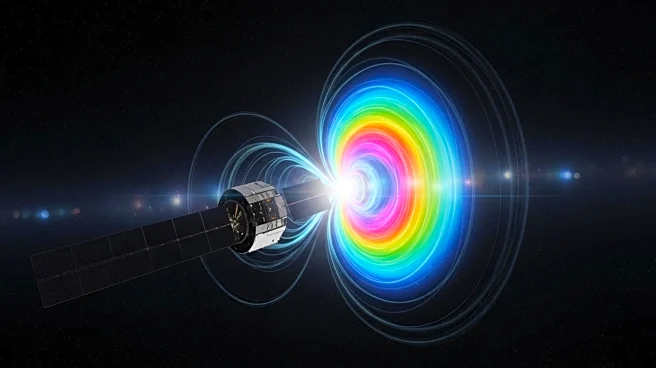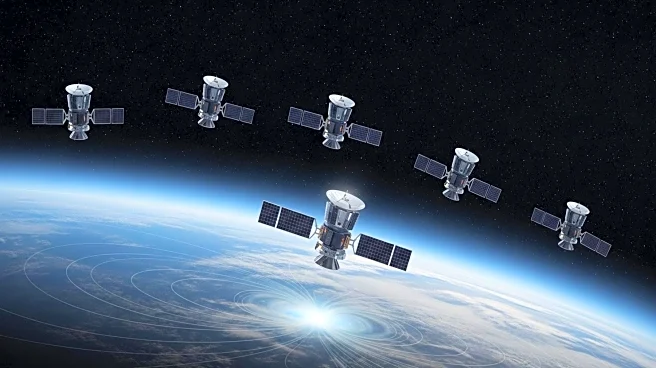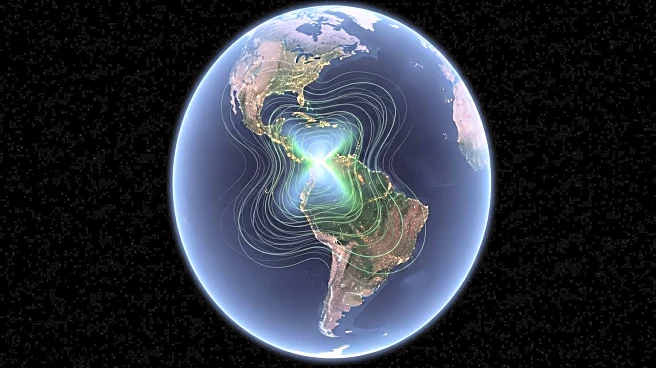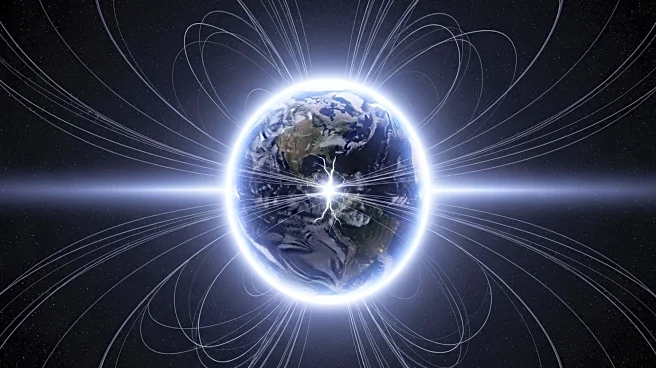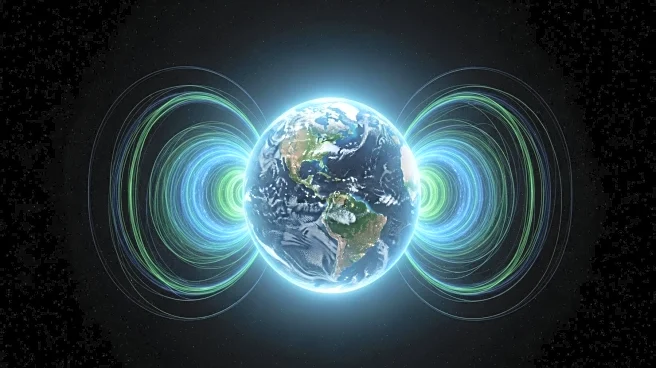What's Happening?
The European Space Agency's Swarm satellite constellation has detected an expansion of the South Atlantic Anomaly, a weak region in Earth's magnetic field. Since 2014, this area has grown to nearly half the size of continental Europe. The anomaly poses risks to satellites due to increased radiation exposure, potentially leading to malfunctions. The Swarm mission provides insights into the complex dynamics of Earth's magnetic field, which is generated by the movement of molten iron in the planet's outer core.
Why It's Important?
Understanding changes in Earth's magnetic field is vital for space safety and navigation. The expansion of the South Atlantic Anomaly could affect satellite operations, leading to increased costs and risks for space missions. Insights from the Swarm mission contribute to our knowledge of geomagnetic processes, which are essential for predicting space weather and protecting technological infrastructure. The findings also have implications for understanding Earth's core dynamics and their impact on the magnetic field.
Beyond the Headlines
The weakening of Earth's magnetic field in certain regions raises questions about long-term planetary changes and their potential effects on life and technology. The anomaly's expansion could influence global navigation systems and necessitate adjustments in satellite design and operation. Additionally, the study of reverse flux patches offers a deeper understanding of geomagnetic phenomena, which could inform future research on Earth's interior processes.



